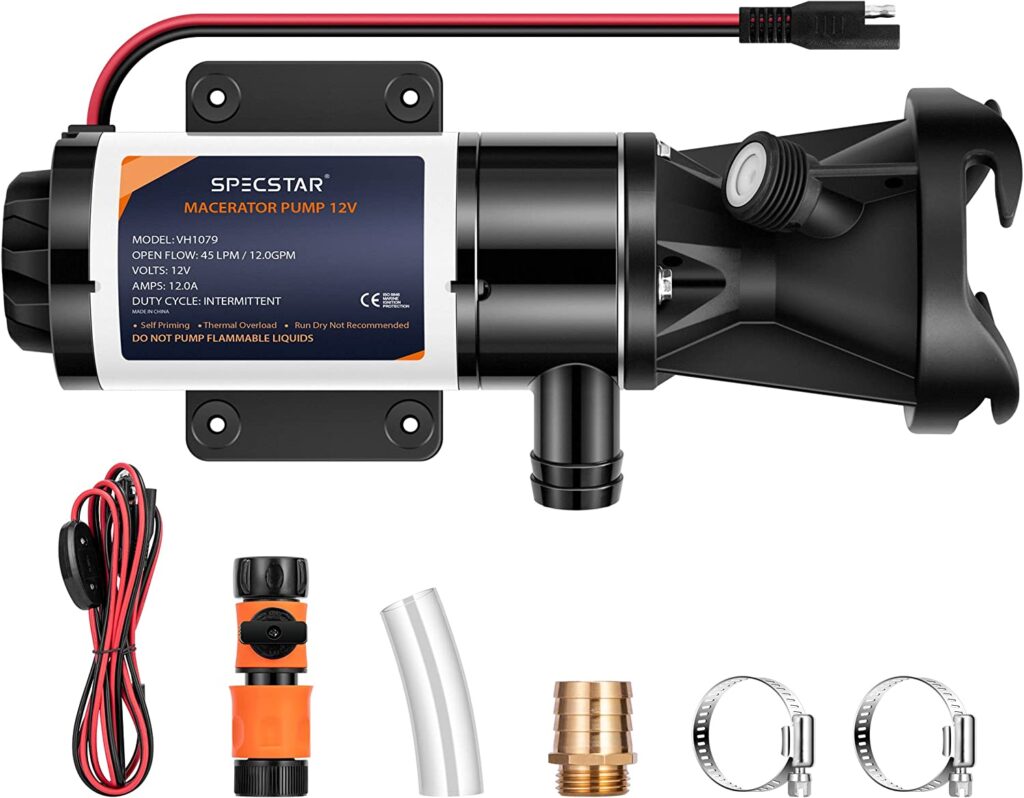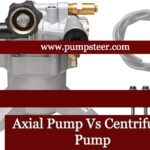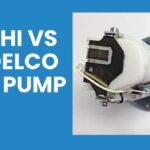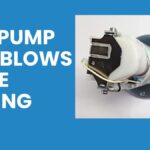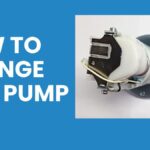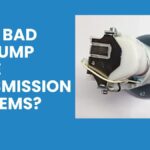Water transfer pumps are used for a variety of applications, ranging from moving water from one location to another to draining pools and tanks.
When it comes to transferring fuel and other liquids, having the right pump is essential. With a variety of water, transfer pumps on the market, choosing the perfect model for your needs can be overwhelming. So, let’s get started by reviewing some of the top-rated pumps and helping you make an informed decision.
If you are moving water from one location to another, then you need a water transfer pump. This type of pump is perfect for draining ponds, emptying swimming pools, or removing water from flooded areas.
There are many different types of water transfer pumps available on the market, so it can be difficult to determine which one is right for your needs. In this article, we will take a look at some of the best water transfer pumps available and review their features. We will also provide tips on how to choose the right pump for your needs.
| Pros | Cons |
| Water transfer pumps are a more efficient way of transferring water from one place to another. They can move a large volume of water quickly and easily. They require less manpower than other methods of transferring water, such as buckets or carts. They can be used to move water over long distances without losing too much pressure. They are relatively easy to operate and maintain. They can be used in a variety of situations, including agricultural and industrial settings. They are cost-effective in the long run. | Water transfer pumps can be damaging to the environment if not used properly. They can be difficult to use in tight or difficult-to-reach spaces. Can be damaged if used in areas with high levels of sediment or debris in the water. |
Water Transfer Pump Reviews
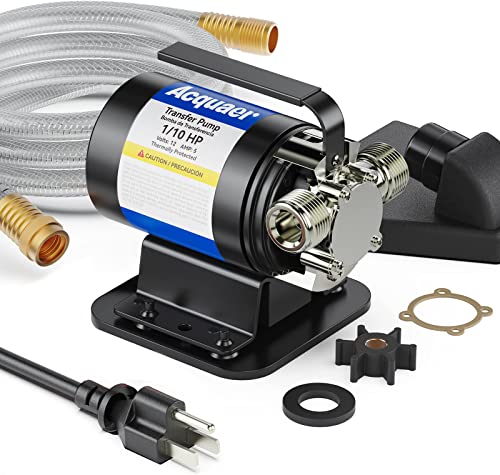
Looking for a water transfer pump? Here are some things you should consider before making your purchase:
- The size of the pump. Make sure to pick a model that’s powerful enough to handle the task at hand.
- The type of pump. There are two main types of water transfer pumps: submersible and portable. Portable models are ideal for smaller applications, while submersible models can be used for both small and large tasks.
- The brand. Not all water transfer pumps are created equal. Choosing a reputable brand is important if you want a quality product that will last.
Doing your research before buying a water transfer pump is essential for ensuring you make the right choice for your needs
Customer Reviews and Ratings
Gibson had been dealing with water problems for years. His family’s land was in an arid area of the state, and access to clean, reliable water sources was limited. He had tried a variety of solutions over the years but nothing seemed to make a lasting impact – until he discovered water transfer pumps.
After researching different models and brands on the market, Gibson decided to invest in one of the higher-end models. After using it for several months, he noticed that his property had almost twice as much usable water as before! Not only did this help solve his problem with drought conditions on his farm – but it also allowed him to irrigate more efficiently and save money in the long run.
Gibson quickly spread the word about these amazing pumps among friends and family members who were facing similar issues of dryness or poor irrigation systems. Everyone praised its effectiveness and raved about how easy it was to use compared to other options they’d tried out before. Even better yet: all agreed that its price tag wasn’t too bad either.
It wasn’t long before word got around about this little miracle pump – soon everyone wanted one for their own property or business operations! It became such a success that manufacturers began creating more advanced versions with extra features like variable speed settings or remote operation capabilities – adding even more value for customers looking for top-notch performance from their equipment purchases.
Today, Gibson is proud to say his discovery has made life easier not just on his own property but many others across the country as well thanks to the superior quality offered by these modernized water transfer pumps.
The water Transfer Pump is rated highly by customer satisfaction! This trusted pump gets the job done with consistent reliability and performance. Perfect for a variety of uses, customers report it as an essential tool in their repertoire.
Cost Comparison of Water Transfer Pump
A water transfer pump may be a necessary purchase for those who need to move large amounts of water or who live in an area with a high water table. The cost of such a pump will vary depending on the size and power of the pump, but some basic models can be purchased for as little as $50.
More powerful and durable pumps can cost several hundred dollars, but they may be worth the investment for those who need to move large quantities of water on a regular basis. It is important to select the correct size pump for the task at hand, as too small a pump will not be able to handle the workload and too large a pump will waste energy and could potentially damage fragile pipes or other infrastructure.
What is a water transfer pump and what are its uses?
A water transfer pump is a device that is used to move water from one place to another. It can be used to move water from a reservoir or pond to a house or building, or it can be used to move water from one part of a river or stream to another.
Water transfer pumps are commonly used in agricultural applications, where they are used to move water from one field or area to another. They are also commonly used for firefighting, where they are used to move large amounts of water from a body of water to the scene of a fire.
How do you choose the right water transfer pump for your needs?
When choosing a water transfer pump, you need to consider the purpose of the pump and the specifications of the system. You also need to take into account the cost and maintenance of the pump. Some factors to consider when choosing a water transfer pump include:
- The maximum flow rate of the pump
- The maximum head height of the pump
- The type of fluid being pumped
- The ambient temperature and ambient pressure
- The electrical characteristics of the pump motor
How much do water transfer pumps cost?
Water transfer pumps vary in price depending on the size of the pump, the horsepower, and the features of the pump. Smaller water transfer pumps can range in price from $50 to $200, while larger water transfer pumps can range in price from $200 to $1,000.
Pumps with greater horsepower generally cost more money, and some pumps come with additional features such as a digital display that shows how many gallons per minute the pump is pumping or an automatic shut-off that turns off the pump when it has reached its preset limit.
Read also: TRU Flow Water Pump Review – The Pros & Cons
FAQ
What is the best water transfer pump for the money?
When looking for a water transfer pump, it’s important to consider the type of water you’ll be transferring. For example, if you’re looking for a pump to transfer petrol or diesel fuel, you’ll need a different pump than if you’re looking to pump out water from your basement.
That said, some general tips to keep in mind when shopping for a water transfer pump include:
- Ensuring the pump is rated for the correct voltage and frequency;
- Checking that the discharge pipe is of an appropriate size to handle the flow rate; and
- Double-checking that the inlet and outlet fittings are compatible with each other.
What are the benefits of using a water transfer pump?
Water transfer pumps offer a variety of benefits, the most obvious being their ability to move large quantities of water quickly and easily. This makes them ideal for tasks such as filling swimming pools, irrigation, or hydroponics.
Water transfer pumps are also very reliable and durable. They are built to withstand tough conditions, making them perfect for use in agricultural or industrial settings. Additionally, they require very little maintenance, which further adds to their convenience and value.
How do I choose the right water transfer pump for my needs?
When choosing a water transfer pump, you’ll need to consider the maximum flow rate and maximum head that the pump can produce. You’ll also need to decide what type of fluid you’ll be transferring – water, oil, or another liquid.
The maximum flow rate is the amount of liquid that the pump can move per minute, while the maximum head is the height from which the liquid can be lifted. The higher the maximum head, the greater the distance you can lift the liquid. Finally, you’ll need to determine what type of connector ports are needed – threaded ports, flange ports, quick-connect ports, etc. – in order to match up with your existing piping system.
How do I use a water transfer pump?
There are a few things you need to know before using a water transfer pump. First, make sure the power is off and the plug is unplugged before you start. Second, remove the cap and fill the pump with water. Third, reattach the cap and plug in the power cord. Finally, hold down the black button on top of the pump and insert the tube into your desired container of water. Once you release the button, water will start flowing out of the tube and into your container.
What are some tips for using a water transfer pump?
Using a water transfer pump can be a bit tricky if you’re not familiar with them. Here are some tips to help you get started:
- Make sure the pump is completely submerged in the water before turning it on. If it’s not, the pump may overheat and damage itself.
- Keep an eye on the water level in the tank. When it gets low, fill it back up to avoid damaging the pump.
- Be careful not to overload the pump by putting too much water into it at once. Start with small amounts and increase gradually as needed.
- If you need to move the pump from one place to another, make sure to unplug it first. Moving a plugged-in pump
How do I troubleshoot a water transfer pump?
There are a few things you can do to troubleshoot a water transfer pump:
- Check the power supply. Make sure that the pump is plugged into an outlet and that it’s turned on.
- Check the hoses. Make sure that the hoses are connected properly and aren’t blocked or clogged.
- Check the filter screen. Make sure that the filter screen is clean and clear of debris.
- Check for leaks. Make sure that there are no leaks in the pump or hoses.
What are some common problems with water transfer pumps?
Some common problems with water transfer pumps include:
- Pump failure due to a blockage in the pump or the hoses
- Pump failure due to a lack of water or improper installation
- Damage to the pump from running it without water
- Noise from the pump due to incorrect installation or a worn impeller
Which pump is commonly used in transferring water?
Centrifugal pumps are the preferred choice in over 95% of domestic and industrial applications, due to their affordability, ease of use, and low maintenance costs. This makes them a widely used option worldwide.
Final Words
The water transfer pump is a great tool to have on hand for any number of reasons. Whether you’re transferring water from one container to another, filling up your pool or spa, or cleaning your property after a storm, this little pump can come in handy. We hope our review has helped you decide if the water transfer pump is the right tool for you and that you find the best model for your needs based on our recommendations. You will love instead fuel pump.

